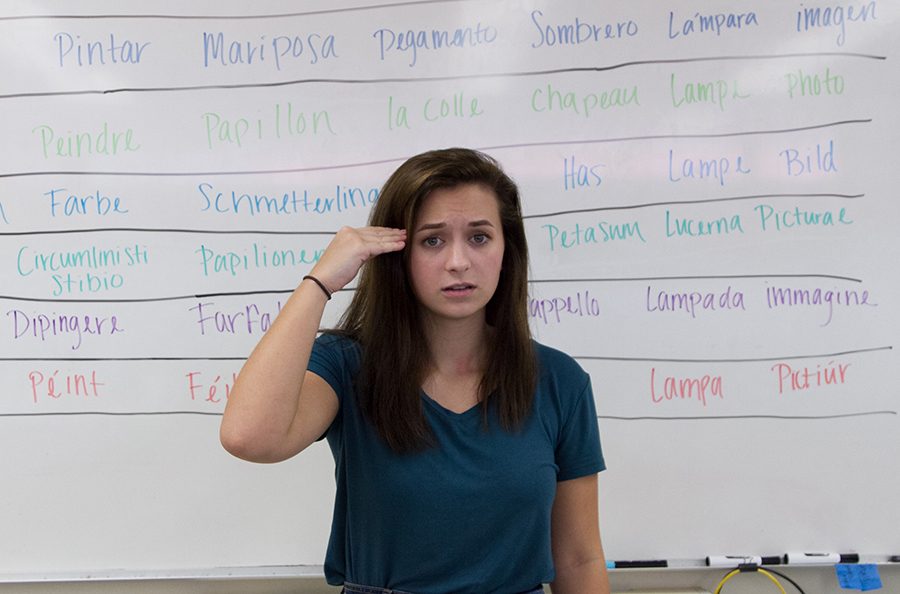A foreign understanding
The truth behind mandatory foreign language requirements
September 29, 2017
Open your mouth and the words will come out with a crisp, natural ease. Or they will tumble off of your tongue and trip over your teeth.
Each student has either taken, or is taking a class teaching them the basics of a language of their choice. Whether or not students being forced by the state to take two years of one class is beneficial to them is questionable.
“In two years [the student] should have a basic understanding and command of the grammar, meaning [the student] should be able to converse in the target language without any hesitation,” said Britni Huggins, Texas High School’s American Sign Language teacher.
Advancing in a language may not have any personal fulfillment for a student. There is debate between whether this makes learning a new language useless to the student or if it sparks interest.
“The two years of a language provides students with a basic enough understanding of the language so that they could have and hold a basic conversation in those job settings,” Huggins said.
Student Tristan Bioletto is expresses his appreciation of his selected language.
“The other day I was in a store and I was sitting next to a deaf girl and her interpreter and could understand the conversation that was going on. Deaf people, or really anyone doing sign language can have a conversation and I can understand it which is really cool to me,” Bioletto said.
Many students question why only two years are required. Some prefer four, which is an option they have. Others may prefer only one, but under school policy, they must take at least two.
Though he doesn’t appreciate the lack of freedom the school provides him in choosing his academic courses, junior Colton Capps admits to the fact that his language class has helped him.
“I took computer science. I love making videos, so if I were to do anything with computers later in life I would probably need to be able to do coding,” Caps said. “I can now code things on computers and use that to change and create different thing that I want to.”
Though some students still press for only one year of their language course. Teachers understand this and voice that, while one year would be the minimum, two years is what is best for the student.
“I think everyone should be exposed to it for at least one year. I think, for most freshmen, it’s hard to find your passion and we hope to spark interest in language,” Huggins said. “That’s why I understand two years. I personally do not agree with only requiring two years. I mean if you think about it, we speak English already and take it for twelve to thirteen years, so I think that two years is not enough to expose a person to a different language.”
The lack of foreign language years granted to students raises some eyebrows. Two years may not be enough to truly open a language up to someone, so many question why we take it at all. While this is an issue, there’s another reason students are upset about a forced language class that may really be causing negative feelings.
“I do wish we offered more language options so that there was a variety of languages they could choose from, because there are languages students are interested in that we don’t know about,” Huggins said.
In a language class, the student learns beyond simply speaking a different language. The teacher also places a focus on culture and the people who speak the language.
“It really does allow you to look at other cultures or address people with a different perspective, understanding that people act with different customs and that we have different history,” Huggins said. “We have to know what isn’t and is appropriate within language settings. It really changes the way you interact with people.”




















